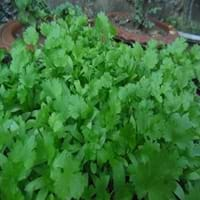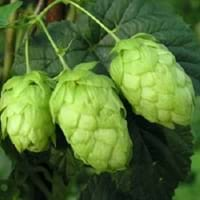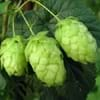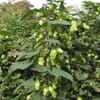Life Span
Annual
Perennial
Origin
Eastern Europe, Mediterranean
North America, Europe, Western Asia
Types
Not Available
lupulus , cordifolius , lupuloides , neomexicanus , pubescens
Number of Varieties
Not Available
Habitat
Damp forests, Farms, Fields, Forests, Open areas, Open Forest, Open Plains, open Woodlands, Subtropical climates, tropical environments, Tropical rainforest, Tropical regions, Wet forest, Wet ground, Wet Woods
ditches, Lake margins
USDA Hardiness Zone
Not Available
4-8
Sunset Zone
A1, A2, A3, H1, H2, 1a, 1b, 2a, 2b, 3a, 3b, 4, 5, 6, 7, 8, 9, 10, 11, 12, 13, 14, 15, 16, 17, 18, 19, 20, 21, 22, 23, 24
A2, A3, 1a, 1b, 2a, 2b, 3a, 3b, 4, 5, 6, 7, 8, 9, 10, 14, 15, 16, 17, 18, 19, 20, 21
Habit
Upright/Erect
Vining/Climbing
Minimum Width
Not Available
Flower Color
White, Light Pink
Green, Magenta
Flower Color Modifier
Bicolor
Bicolor
Fruit Color
Tan, Sandy Brown
Tan
Leaf Color in Spring
Green, Light Green
Chartreuse, Yellow green
Leaf Color in Summer
Green, Light Green
Dark Green, Light Yellow, Yellow green
Leaf Color in Fall
Green
Yellow, Yellow green
Leaf Color in Winter
Light Green
Light Green
Leaf Shape
Irregular
Lobed and toothed
Plant Season
Spring, Summer, Fall
Spring, Summer, Fall
Sunlight
Full Sun, Partial Sun
Full Sun, Partial Sun
Growth Rate
Very Fast
Fast
Type of Soil
Loam, Sand
Clay, Loam
The pH of Soil
Neutral
Acidic, Neutral
Soil Drainage
Well drained
Average
Bloom Time
Early Summer, Summer, Late Summer
Summer
Tolerances
Drought
Drought
Where to Plant?
Container, Ground, Pot
Ground
How to Plant?
Seedlings, Stem Planting
Semi-hardwood cuttings, Softwood cuttings
Plant Maintenance
Medium
Medium
Watering Requirements
Do Not over Water, Keep ground moist, Never Over-water, Requires regular watering
Keep ground moist, Keep the Soil well drained
In Summer
Lots of watering
Lots of watering
In Spring
Moderate
Moderate
In Winter
Average Water
Average Water
Soil pH
Neutral
Acidic, Neutral
Soil Type
Loam, Sand
Clay, Loam
Soil Drainage Capacity
Well drained
Average
Sun Exposure
Full Sun, Partial Sun
Full Sun, Partial Sun
Pruning
Remove damaged leaves, Remove dead or diseased plant parts, Remove shoots
In Early Autumn, Remove damaged leaves, Remove dead branches, Remove dead leaves
Fertilizers
fertilize in growing season, Phosphorous, Potassium
All-Purpose Liquid Fertilizer, General purpose fertilizer with an NPK ratio 3-1-2
Pests and Diseases
Bacteria, Bacterial leaf spot, Beet armyworm, Cutworms, Damping off, Damping-off, Powdery mildew, Red blotch, Root knot nematode, Watery soft rot
Aphids, Japanese Beetles, Red spider mite
Plant Tolerance
Light Frost
Drought
Flower Petal Number
Single
Not Available
Fragrant Bark/Stem
Yes
No
Foliage Texture
Fine
Medium
Foliage Sheen
Matte
Matte
Attracts
Caterpillar, Flying insects, Insects, Mites
Beetles
Allergy
Itchy eyes, Red eyes, Runny nose, Sore eyes, Watery eyes
Unknown
Aesthetic Uses
Not Used For Aesthetic Purpose
Cottage Garden, Farmland, Informal Hedge, Wild gardens
Beauty Benefits
Not Available
Not Available
Environmental Uses
Air purification, Food for animals, Food for birds, Food for insects
Air purification
Medicinal Uses
anti-cancer, Fiber, Nutrients
anti bacterial, increase urine flow, Insomnia
Part of Plant Used
Leaves
extracted oil, Flowers
Other Uses
Used As Food, Used for its medicinal properties, Used as a spice, Used in salads
brewing beer
Used As Indoor Plant
Yes
No
Used As Outdoor Plant
Yes
Yes
Garden Design
Container, Edible, Herb / Vegetable
Bedding Plant, Edible, Feature Plant, Herb / Vegetable, Rock Garden / Wall, Vine
Botanical Name
CORIANDRUM sativum
HUMULUS lupulus 'Aureus'
Common Name
Cilantro, Coriander
Columbus Hops
In Hindi
धनिया
साधारण राज़क
In German
Koriander
Echter Hopfen
In French
Coriandre
Houblon
In Spanish
Cilantro
Humulus lupulus
In Greek
Κολίανδρο
Columbus Hops
In Portuguese
Coentro
Lúpulo
In Polish
Kolendra
Chmiel zwyczajny
In Latin
coriandrum
Columbus Hops
Phylum
Tracheophyta
Magnoliophyta
Class
Magnoliopsida
Magnoliopsida
Family
Apiaceae
Cannabaceae
Clade
Angiosperms, Asterids, Eudicots
Angiosperms, Eudicots, Rosids
Tribe
Coriandreae
Not Available
Subfamily
Apioideae
Not Available
Number of Species
Not Available
Season and Care of Coriander and Columbus Hops
Season and care of Coriander and Columbus Hops is important to know. While considering everything about Coriander and Columbus Hops Care, growing season is an essential factor. Coriander season is Spring, Summer and Fall and Columbus Hops season is Spring, Summer and Fall. The type of soil for Coriander is Loam, Sand and for Columbus Hops is Clay, Loam while the PH of soil for Coriander is Neutral and for Columbus Hops is Acidic, Neutral.
Coriander and Columbus Hops Physical Information
Coriander and Columbus Hops physical information is very important for comparison. Coriander height is 20.30 cm and width 15.20 cm whereas Columbus Hops height is 370.00 cm and width Not Available. The color specification of Coriander and Columbus Hops are as follows:
Coriander flower color: White and Light Pink
Coriander leaf color: Green and Light Green
Columbus Hops flower color: Green and Magenta
- Columbus Hops leaf color: Chartreuse and Yellow green
Care of Coriander and Columbus Hops
Care of Coriander and Columbus Hops include pruning, fertilizers, watering etc. Coriander pruning is done Remove damaged leaves, Remove dead or diseased plant parts and Remove shoots and Columbus Hops pruning is done In Early Autumn, Remove damaged leaves, Remove dead branches and Remove dead leaves. In summer Coriander needs Lots of watering and in winter, it needs Average Water. Whereas, in summer Columbus Hops needs Lots of watering and in winter, it needs Average Water.





